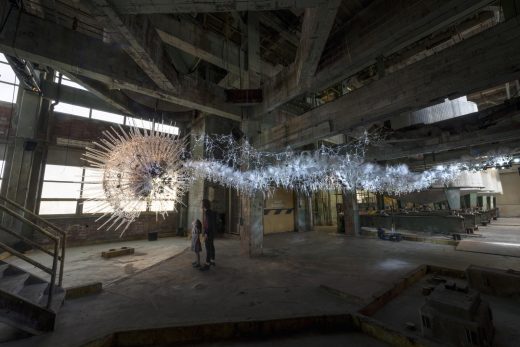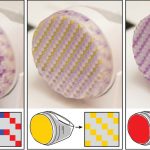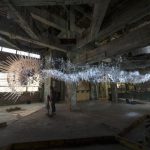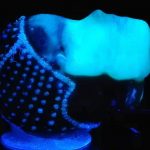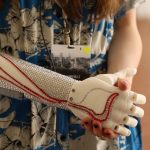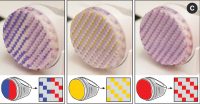‘Astrocyte’ explores how architecture can interact with humans
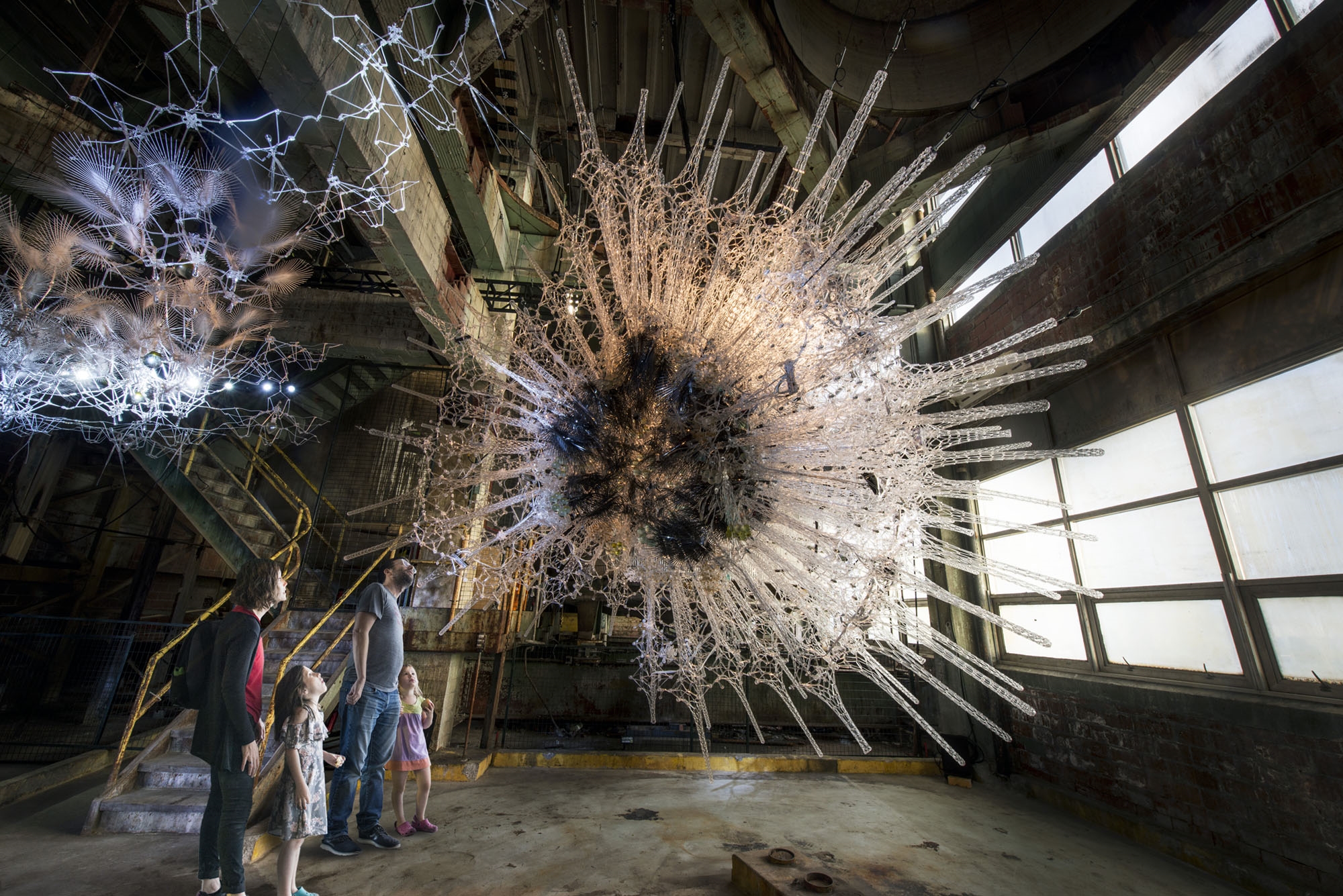
Philip Beesley’s Astrocyte aims to show that architecture can be more than just ornamental. Built from acrylic, mylar, sensors, custom glasswork, 3D-printed lights and using AI, chemistry and a responsive soundscape, it not only invokes emotional reactions but reacts to participants’ movements and gestures. The giant, delicate-looking structure (inspired by astrocyte nerve cells), also prompts unusually respectful interactions from human observers.
The aerial scaffold structure was part of Toronto’s Expo for Design, Innovation and Technology (EDIT 2017), and hosted at an abandoned Unilever soap-manufacturing factory. It was built from 300,000 components by Philip Beesley Architect Inc. (PBAI), in collaboration with Beesley’s Living Architecture Systems Group at the University of Waterloo.
Astrocyte responds to viewers movements with patterns of light, surround sound and vibrations not unlike signals propagating along a nerve. The glasswork also holds oils and chemicals meant to represent the structure and energies of organic life. With the artwork, Beesley and his Living Architecture group are also exploring future building materials that could self-repair or alter spaces through media, light and sound.
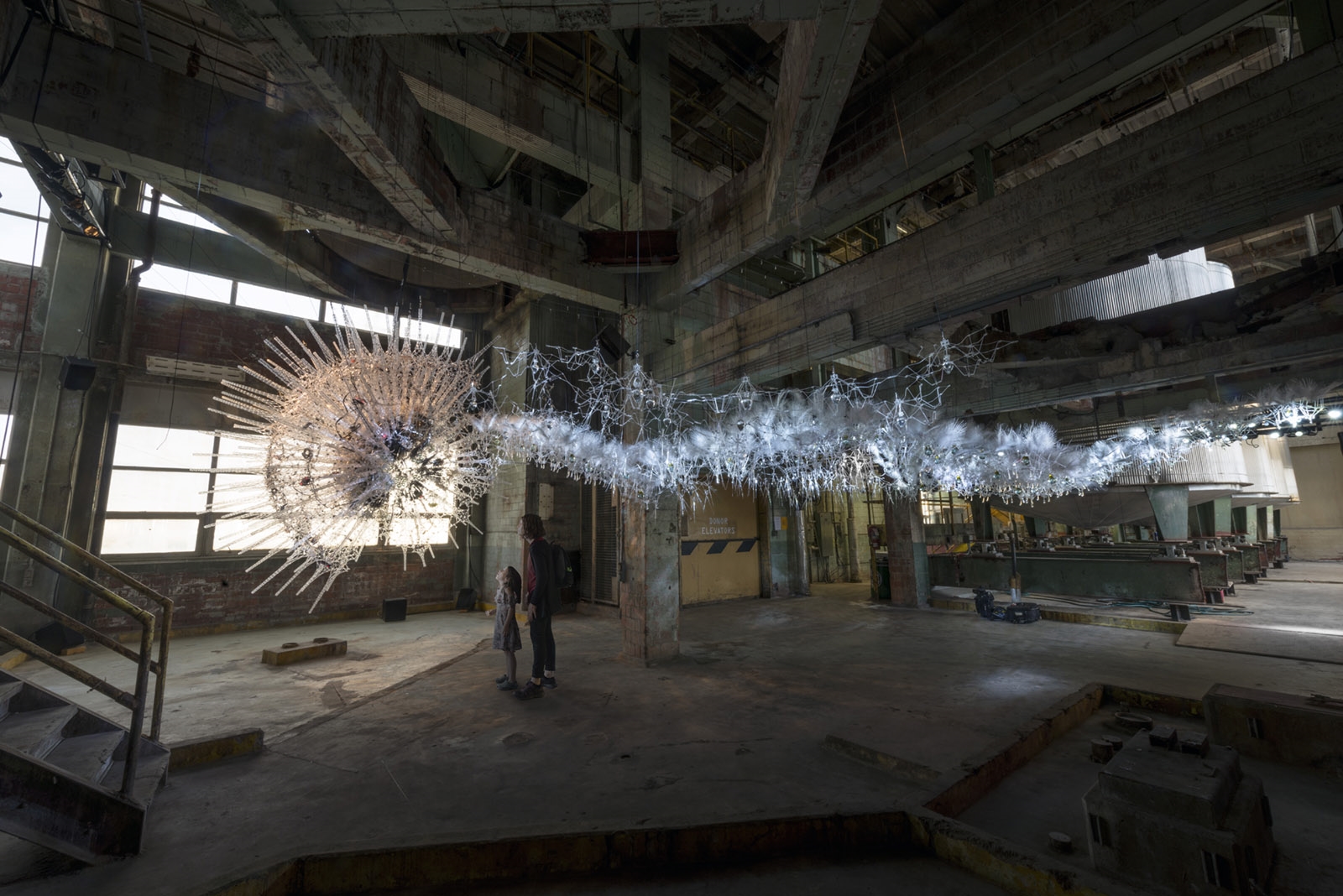
“PBAI Studio works with a wide consortium of artists, engineers, scientists, and researchers as a central member of the Living Architecture Systems research group,” Beesley told Farmboy Fine Arts. “We explore the possibilities of next generation architecture, responsive environments, digital media and immersive sculpture. So we are asking, how might buildings and our environments begin to know and care about us? And might they start, in very primitive ways, to become alive?”
Astrocyte is based on “biophilic” architecture and design, which posits that humans innately seek to connect with nature. Much like with some types of vegetation and other natural systems, it looks fragile but is tough enough to handle interaction with exhibition participants.
“The work is robust, yet delicate in nature, and this seems to encourage different ways of acting,” Beesley said. “Observing people interacting with these spaces is quite striking because extraordinarily gentle and respectful responses tend to happen. Have we caused someone to experience a different, and perhaps healthier form of interaction?”
Astrocyte was created in partnership with 4D Sound, with the support of the Social Sciences and Humanities Research Council of Canada and the Ontario Arts Council.
(53)

